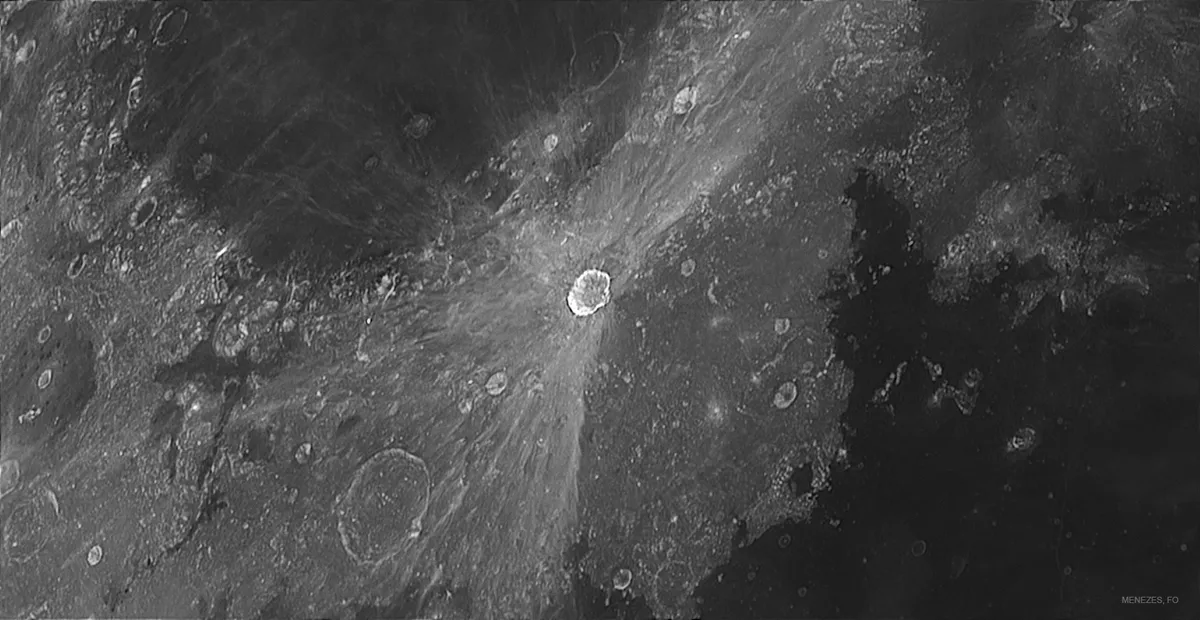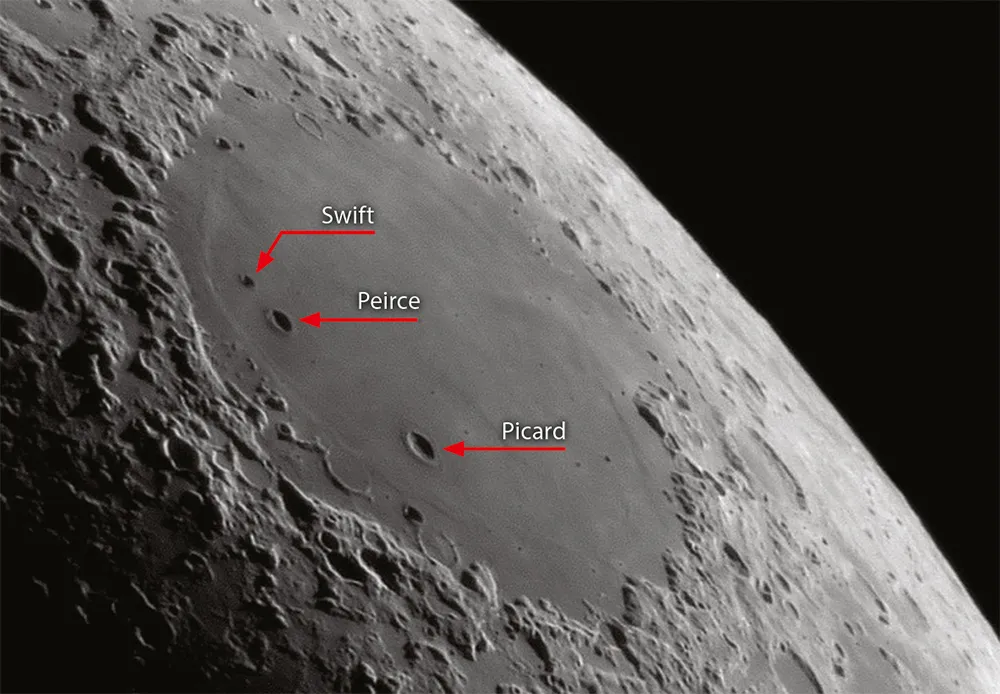Proclus crater has a diameter of 29km, but is 5.5km deep. It’s always identifiable whenever it’s in sunlight, partly because of its brightness and partly because of its position.
It was named after the Athenian philosopher and mathematician, Proclus Diadochus (410-485 AD).
Proclus lies at the eastern tip of the Palus Somni, the Marsh of Sleep.
It has a very sharp rim, and the walls are steep and continuous. There is a low central mountain, which I always find a very easy object to observe with a small telescope.
For more info on lunar observing, read our guides on how to observe the Moon and the best features on the Moon.

Facts about Proclus crater
- Size: 26.9km
- Age: No older than 1.1 billion years
- Location:Latitude 16.1°N, longitude 46.8°E
- Recommended observing equipment: 4- to 6-inch telescope
Proclus crater is the centre of a bright ray system, but unlike the major ray systems this one is not symmetrical.
To the east lies an upland, on the far side of which is the famous Mare Crisium, the Sea of Crises.
The rays extend across the uplands and on to the Mare Crisium, and they are fairly prominent when seen under high illumination.
The situation to the west of Proclus is quite different. The rays extend for some distance but do not enter the Palus Somnii.
Instead, the marsh is bounded to either side by a ray, and the colour of the darker material towards the rays is rather unusual.

It is clear that the Proclus rays were formed in a different manner from those of the major systems such as Tycho crater.
On the side of the Mare Crisium facing Proclus there are two capes – Lavinium and Olivium.
The capes are separated by two low, curved ridges, and many years ago some observers reported seeing a ‘bridge’ from one cape to the other. This is certainly not the case – there is nothing at all strange about these two capes.
The land towards the Mare Crisium and Proclus is brighter, and very rough, with no particularly well-marked formations.
There is one crater, Fredholm, which is 13km across and fairly regular in shape. I have looked for a central mountain inside it, but I have never seen one.
The position of Proclus means that it comes into view not very long after a new Moon, and remains visible until well after the full Moon, before it is cut off from the sunlight.
It is well worth watching and photographing this area at times of sunrise and sunset. For lunar imaging advice, read our guide on how to photograph the Moon.

Every casual observer of the Moon will be able to identify the Mare Crisium.
On the Earth-facing side of the Moon it is the only prominent ‘sea’ that is separated from the main mass, and this makes it stand out.
There are not many major craters on the mare, just Picard and Peirce, together with Swift (formerly known as Peirce B).
The boundary of the Mare Crisium is well-identified everywhere, and the colour is decidedly different from that of the outer regions.
All maps of the Moon, even the earliest, show it unmistakably.
